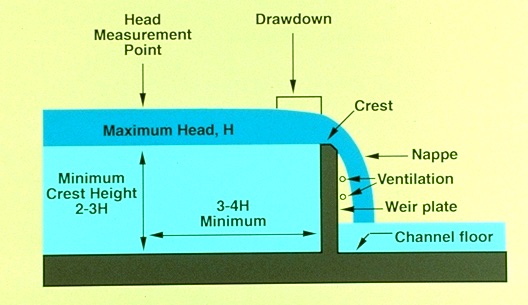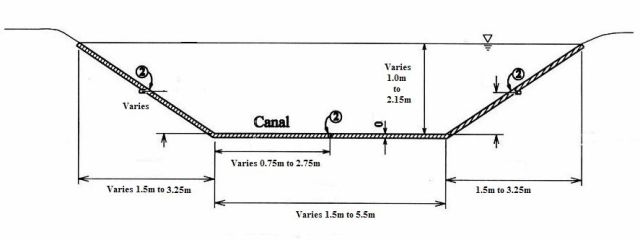Design of Weir and Conditions for Stability & Maximum stress

In any hydropower projects the diversion structures occupies the key position. Among these diverging structures weir is the most commonly used structure, because of its simple design and operation. Different types of weir can be used as diverging structures some of them are given below:
Also See: Components of Weir
- Sharp crested weir
- Broad crested weir
- Ogee weir
- Tyrolean weir
- weir with lateral intake etc
Lets consider a general case of weir design.

Forces on Weir
The forces acting on a weir built on a impervious foundation may be static or dynamic. The static forces include:
- Normal water pressure on the upstream face of the weir.
- Normal water pressure on the downstream face of the weir.
- The weight of the water supported by the crest and the weight of the weir.
Dynamic forces
The dynamic forces acting on weir includes:
- Erosive or the scouring forces on the downstream side of the weir produced either by high velocity or by the impact of water pouring over the weir.
- The force of impact of floating matter against the crest on the upstream side of the weir.
Conditions for Stability of Weirs
There are some conditions that are required to be satisfied for the stability of the weir. These includes:
- There must be no tension in the masonry or in the contact plane between weir and the foundation.
- There must be no overturning.
- There must be no tendency to slide on the joint with the foundation or any horizontal plane above the base.
- The maximum toe and heel pressures in foundations should not exceed the prescribed safe limits. Failure by crushing is not considered here, as it generally does not occur, being a low structure.
Also See: How to Design a Barrage
Condition of Maximum Stress on Weir
In the case of a dam the condition for maximum stress is when the water level above the base is maximum. i. e. when the head is maximum. But in case of a weir design, when the discharge increases the near water level also builds up and the difference between them will become less and less. So, the weir is subjected to maximum head when the water level on the upstream side is maximum and no water passes over the crest.











